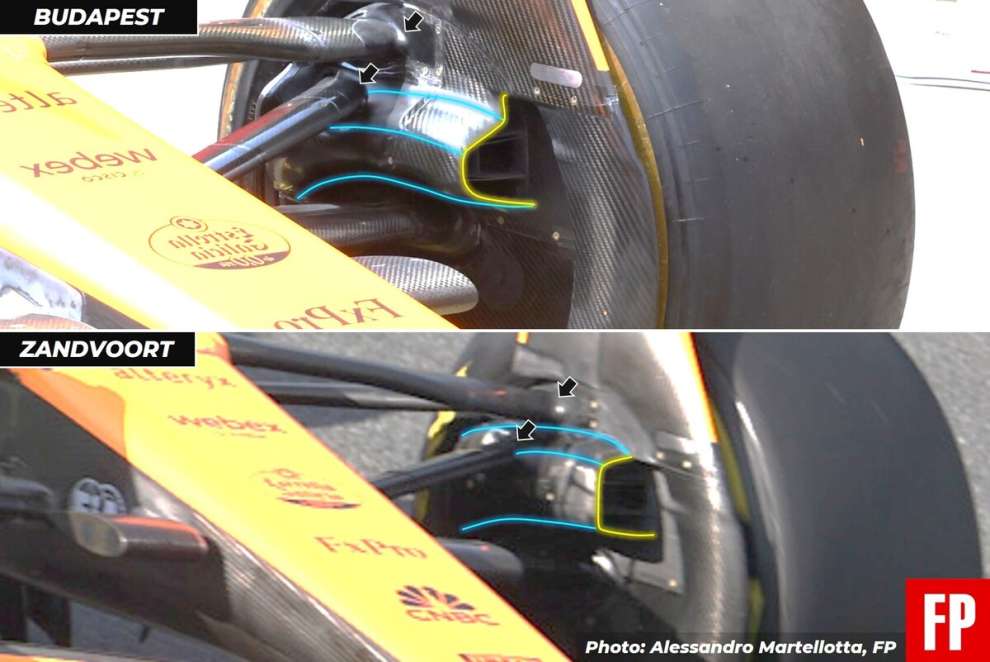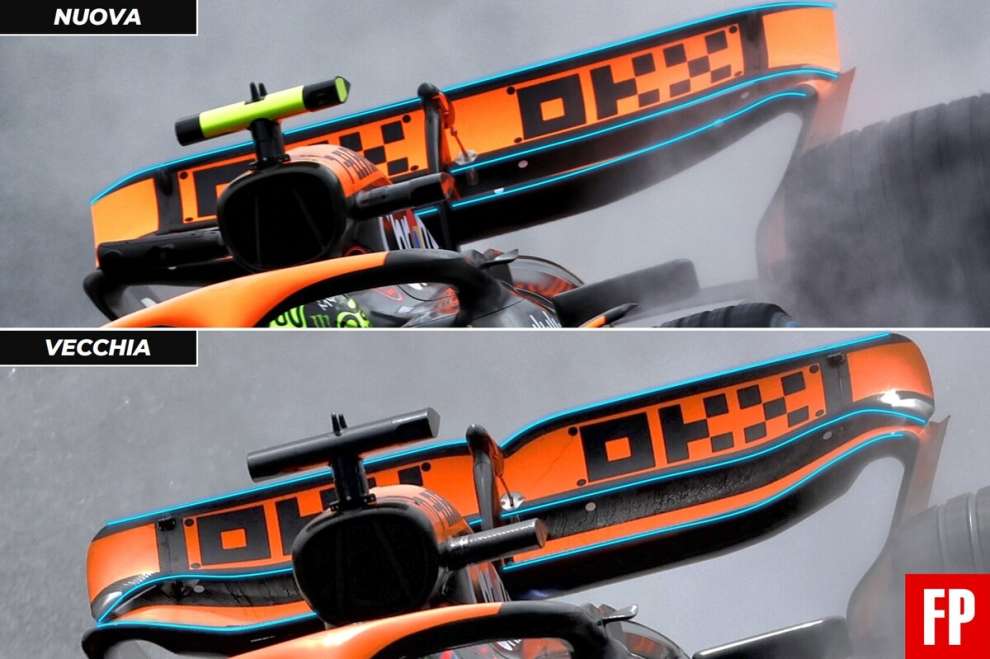By Carlo Platella
McLaren had barely had time to return from vacation before immediately capturing the attention of the technical press, introducing the second evolutionary package at Zandvoort. The Woking team had not brought any updates since the Miami Grand Prix, and is now a candidate to extend its lead over its direct challengers, Red Bull and Mercedes above all. In addition to the possible repercussions on the sporting results, the Dutch updates underline a particular approach of McLaren to developmentwhich has so far proven to be highly effective.
The Zandvoort package
The most important news about the Dutch MCL38 concerns the bottom. In Woking, work was done on the outer edge, seeking to improve shielding from external turbulence and the lateral extraction of flows from under the car to generate aerodynamic load at the centre of the car. The changes are almost imperceptible to the external observer, with the floor representing a direct evolution of the previous Miami specification, maintaining the same basic layout.
Another important novelty concerns the aerodynamics of the front axle. McLaren has redesigned the front brake cooling ducts, correcting the structure of flows and vortices that propagate behind the wheels, with positive repercussions on the underbody. In synergy with the changes to the brakes, the fairings of the front suspension elements have been redesigned, particularly in the areas where the wishbones and the cooling duct join. The team had already worked on the suspension fairings with the Miami package, highlighting all the attention dedicated to improving the structure of the flows that propagate from the front to the centre of the car.

The aim of the Zandvoort package is increase the aerodynamic efficiency of the MCL38without any particular need to correct its balance or character flaws. The team carried out comparative tests in the first free practice session, in which Oscar Piastri ran with the old aerodynamic trim. In addition to the general updates, McLaren also equipped itself with a new high-downforce configuration, revising the beam wing and the rear wing.

A diligent approach
The Dutch one is the second evolutionary package for McLaren after the one brought to Miami. In the same period of time Red Bull introduced new features in Imola, Barcelona, Silverstone and Budapest, Ferrari in the races in Emilia-Romagna and Spain, while Mercedes in Miami, Imola, Montreal and Spa. The moderate pace maintained by McLaren with the development, however, is not indicative of a deficiency of some kind, but of a well-researched approach to maximize the effectiveness of the new parts, making sure not to run into any side effects of any kind.
“In a good way, We took our time to understand thoroughly”, explains Lando Norris. “We’ve seen other teams bring new things to the car that haven’t necessarily worked. We wanted to make sure we didn’t do that, which is why we’ve been patient. Even though we’ve had some great weekends, I think we’ve paid the price in the last few races compared to some of our competitors who have brought upgrades.”

Andrea Stella echoes him: “After Miami we took our time to think about the development and convince ourselves that we had to give the green light to bring new parts to the track. Nowadays there are also limitations on costs, so you can’t just bring everything and test it on the circuit, you have to be diligent. We are certainly interested to see how the car responds to these new features. There will be more in the upcoming races, hopefully these will help us improve performance and continue to fight for strong race results.” McLaren had already postponed parts initially scheduled for the launch version to Miami at the beginning of the year, and was then repaid by the performance expressed from Florida onwards. A leap that Woking now hopes to replicate with the second package.
#Updates #McLarens #contrarian #approach #works